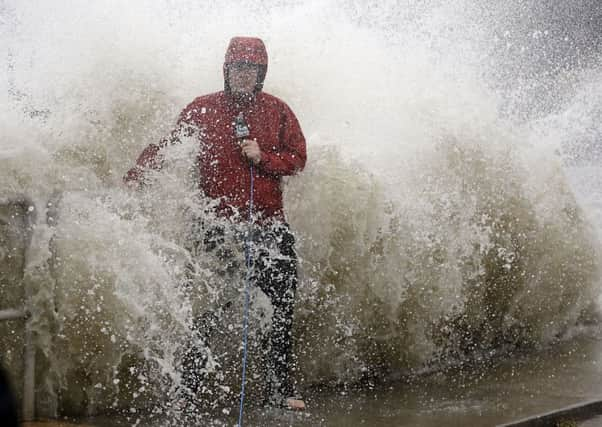80mph Hermine batters Florida coast as residents run for cover


The Category 1 storm hit with winds around 80 mph, according to the US National Hurricane Centre. Hermine later weakened to a tropical storm as it moved farther inland.
Projected storm surges of up to 12 feet menaced a wide swathe of the coast and an expected drenching of up to ten inches of rain carried the danger of flooding along the storm’s path over land, including the state capital Tallahassee, which has not been hit by a hurricane since Kate in 1985.
Advertisement
Hide AdAdvertisement
Hide AdAs of 5am yesterday morning, Hermine was weakening as it moved into southern Georgia, the Hurricane Centre said.
After pushing through Georgia, Hermine was expected to move into the Carolinas and up the East Coast, with the potential for drenching rain and deadly flooding.
In Florida’s Pasco County, north of Tampa, authorities said flooding forced 18 people from their homes in Green Key and Hudson Beach. Pasco County Fire Rescue and sheriff’s deputies used high-water vehicles to rescue people from rising water. They were taken to a nearby shelter.
The last hurricane to strike Florida was Wilma, a powerful Category 3 storm that arrived on 24 October, 2005. It swept across the Everglades and struck heavily populated south Florida, causing five deaths in the state and an estimated $23 billion (£17bn) in damage.
Many took no chances with Hermine. Tallahassee resident Tom Duffy, 70, said before the hurricane hit that he planned to reserve a hotel room in the neighbouring state of Alabama if downed trees caused the kind of power outages he expected. The city government tweeted there were about 70,000 power cuts around the capital city.
“We’ve dodged bullet after bullet after bullet,” Mr Duffy said, but added that Hermine has taken “dead aim” at the city, where blustery winds sent trees swaying before dawn.
In Carrabelle, on the coast just 60 miles southwest of Tallahassee, Courtney Chason was keeping an eye on the storm surge as docks and boat houses were slowly being battered as the storm approached.
“I’ve never seen it this high, it’s pretty damn crazy. I’ve been in this area for 30 years but I’ve never seen it like this,” Ms Chason said. “I hope it doesn’t get any higher, we need lots of prayers.”
Advertisement
Hide AdAdvertisement
Hide AdResidents on some islands and other low-lying, flood-prone areas in Florida had been urged to clear out. Flooding was expected across a wide swath of the marshy coastline of the Big Bend – the mostly rural and lightly populated corner where the Florida peninsula meets the Panhandle.
Florida Govenor Rick Scott warned of the danger of strong storm surges, high winds, downed trees and power cuts, and urged people to move to inland shelters if necessary and make sure they have enough food, water and medicine.
“You can rebuild a home, you can rebuild property, you cannot rebuild a life,” Mr Scott said at a news conference, adding that “we are going to see a lot of flooding”.
Mr Scott, who declared an emergency in 51 counties, said 6,000 National Guardsmen were poised to mobilise for the storm’s aftermath. The governors of Georgia and North Carolina also declared states of emergency.
Across the Florida line in south Georgia, about a dozen people had already arrived by Thursday evening at a Red Cross shelter that opened at a city auditorium in Valdosta normally used for banquets and gospel concerts.